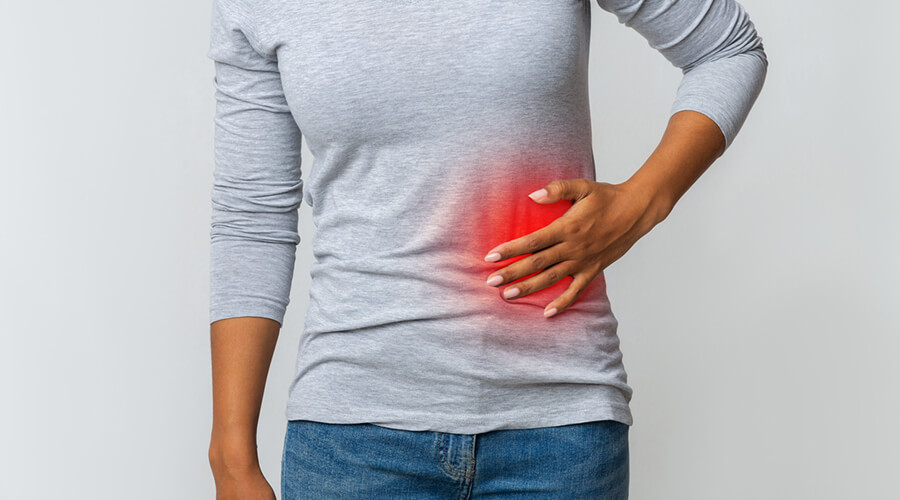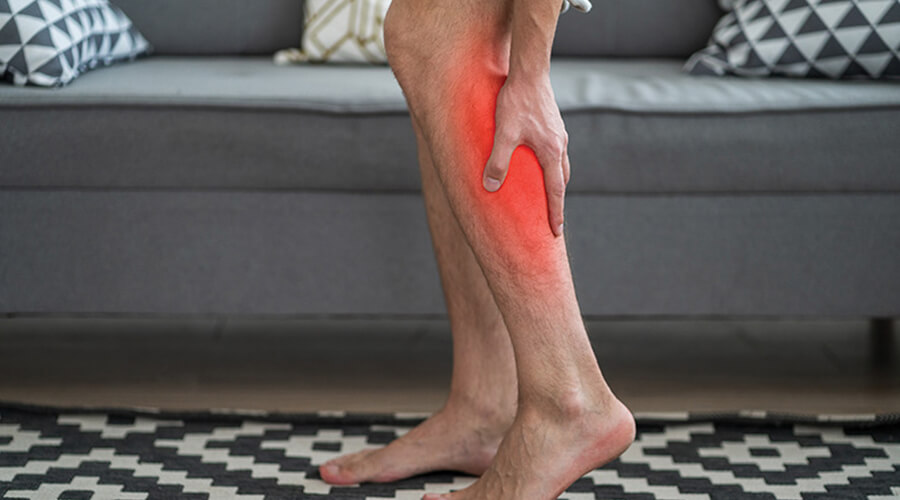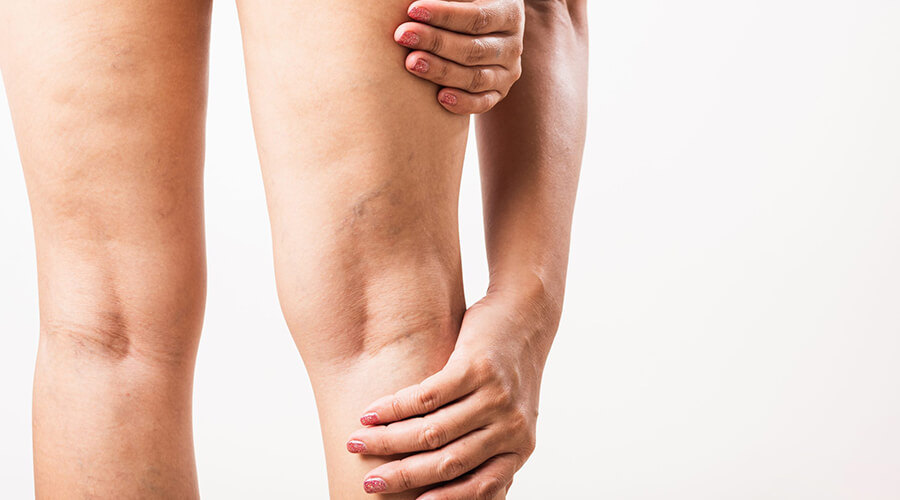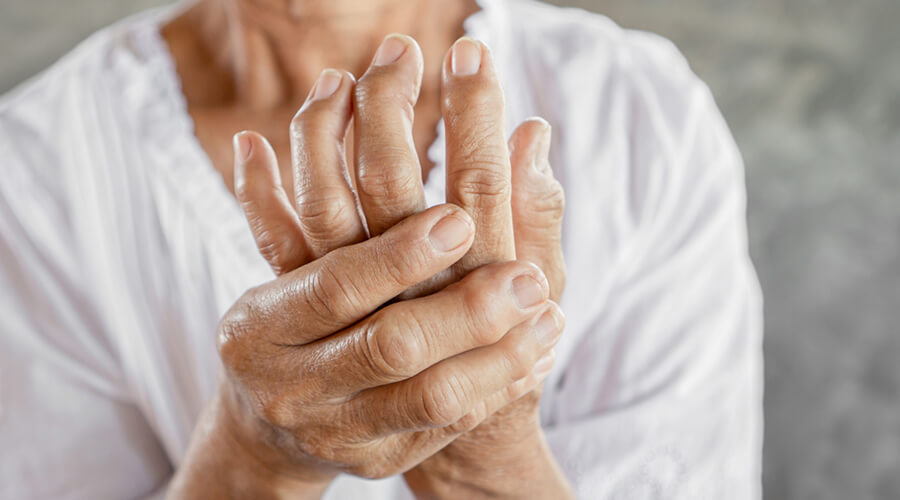
In the lower left side of the abdomen is the last part of the large intestine and, for many women, one side of the ovary. The causes of left abdominal pain can include. In this article we will explore this topic.
If you develop minor pain in this area, there is nothing to worry about and in most cases it will go away in a few days. If, however, the pain lasts for a longer period of time, there are several reasons for the left side abdominal pain.
Abdominal pain on the left side? Diverticulitis could be behind it!
There are several cases of persistent left abdominal pain caused by diverticulitis. A diverticulum is a small sac that forms in the weakest part of the large intestine due to pressure. It is a common phenomenon that tends to develop after the age of 40. When such a sac ruptures, it can cause swelling and infection.
The following are symptoms of diverticulitis:
– nausea
– fever
– stomach pain
– vomiting in worse cases
– very rarely constipation
Rest, dietary changes and antibiotic treatment are also very helpful for this problem. However, if the condition is severe or possibly recurrent, it is treated surgically.
It may also be caused by indigestion. Left-sided abdominal pain can therefore also be caused by bloating. Indigestion usually occurs after a meal. The stomach produces acid during and after eating. Stomach acid can also irritate the oesophagus, stomach and intestinal walls. This pain usually occurs in the upper part of the abdomen, but there are also cases of pain in the lower part of the abdomen.
Other symptoms of indigestion:
– heartburn
– bloating
– nausea
– thick bowel gas leakage
If the indigestion persists for a long time, you should see a specialist, but it is a good idea to change your diet first. Eat plenty of fruit and vegetables and reduce or eliminate sugar and alcohol intake.
Left lower abdominal pain that you feel? A hernia may be behind left abdominal pain. In the case of a hernia, a lump or bump may appear in the abdomen or groin. Other symptoms of a hernia may include:
– the bump is growing
– the pain increases
– pain when lifting
– constant feeling of fullness
A hernia is already a serious problem, so if you are experiencing these symptoms, you should seek medical attention as soon as possible.
Left lower abdominal pain and lower back pain can also be the result of muscle or joint injuries, poor posture, excessive physical activity, urinary tract infections or digestive problems.
Left lower abdominal pain in women can be caused by menstrual problems or ovarian disease, while in men it can also be caused by prostate problems.
If the pain is acute and severe and/or accompanied by fever, nausea or vomiting, it may require emergency medical intervention. If the pain is less severe and you have no other symptoms, try to rest, reduce physical activity and watch your diet. If your symptoms persist, or if you have any other symptoms, see a doctor to find out the exact cause and get appropriate treatment.
Abdominal pain on the left side? It can be caused by kidney stones!
Abdominal pain on the left side can also occur if it is kidney cancer. Kidney stones usually cause problems if they are inside the kidney or in the urethra that connects it to the bladder.
In this case, the kidney stone can cause very severe pain on the side of the abdomen, in the back and even under the ribs. This can be left side pain or left abdominal pain. This pain comes in waves and can go away overnight and then come back again. Of course, there can be several causes of left abdominal pain, so if you are not sure what is causing it, it is recommended that you have it checked out!
You may even experience these in the case of kidney stones:
– cloudy, reddish, brownish urine
– painful urination
– nausea
– vomiting
– fever or chills
There is no explicit reason for its development. There are factors that may increase the risk of developing it, e.g. if there is a family history of it. If you notice any of these symptoms, you should seek medical advice. However, there are home remedies for kidney stones such as parsley tea, drinking plenty of fluids and getting plenty of exercise.
What is the cause of left abdominal pain under the ribs?
Left-sided abdominal pain under the ribs can be caused by a number of things, such as gastritis, gastritis, peptic ulcer, diverticulitis, pancreatitis, kidney or bladder disease, cervical cancer, etc. If the pain is severe or long-lasting, a doctor should be consulted to determine the cause and prescribe appropriate treatment.
What is the cause of left abdominal pain that occurs with movement?
Left abdominal pain on movement can be caused by a number of things, including:
-Diverticulitis: inflammation of protrusions in the intestinal wall
-Rectal inflammation: pain caused by rectal inflammation may occur on the left side
-Bladder inflammation: pain caused by inflammation of the bladder may occur on the left side
-Spinal problems: spinal problems such as arthritis, herniated discs or herniated discs can cause pain in the abdomen and back
What is the cause of left abdominal pain that occurs when pressure is applied?
Left abdominal pain on pressure can be caused by a number of things, including:
-gastrointestinal disorders such as diverticulitis, pancreatitis, gastritis, peptic ulcer or duodenal ulcer,
-reproductive disorders such as ovarian cysts, uterine fibroids,
-abdominal injuries such as abdominal trauma,
-kidney diseases such as kidney failure, kidney stones, kidney inflammation,
-pain can also be caused by bladder diseases such as cystitis, bladder stones.
It is important to see a doctor if the pain is severe or long-lasting so that the cause can be identified and appropriate treatment prescribed.
What are the left abdominal organs?
They may belong to the left abdominal organs:
-The stomach
-The spleen
-The left kidney
-The left intestinal canal (the left large and small intestine)
-The left ovary (for women)
-Left testicle (for men)
Left-sided ovarian pain can be caused by a number of things. One possible cause is inflammation of the ovaries (oophoritis). Ovarian inflammation can be acute or chronic and can cause other symptoms besides pain, such as fever, nausea, vomiting, abdominal distension and bleeding.
Stabbing pain in the left side of the lower abdomen in women can be caused by a variety of reasons, including the urinary system and age-related changes. The aforementioned ovarian inflammation may also be involved. Left lower abdominal pain can also be included here. If the pain is persistent or severe, or if it is accompanied by other symptoms, consult a doctor to determine the exact cause and to administer appropriate treatment.
“I have a stomach ache down the left side” – or a stomach ache down the left side
Abdominal pain on the left side can often be linked to kidney stones, uterine or ovarian problems, colitis, or muscle tension or injury.
Dull pain on the left side
There can be several different causes of dull left side abdominal pain, some of which include:
Gastrointestinal problems: for example, gastrointestinal diseases such as colitis, irritable bowel syndrome (IBS), diverticulitis or tension caused by intestinal gas.
Kidney problems: pain caused by a left kidney stone or kidney inflammation.
Gynaecological problems: for example, pain caused by ovarian cysts, inflammation of the fallopian tubes or cervicitis.
Injuries: pain from left abdominal injuries such as bumps, sprains or pulled muscles.
Abdominal problems: for example, pain caused by muscle strain, abdominal hernia or abdominal inflammation.
Organ lesions: pain caused by organ lesions in the left side of the abdomen, such as a malignant tumour or organ enlargement.
Nerve-related problems: for example, pain caused by inflammation of the nerves or nerve constriction.
Left side stabbing pain can have several potential causes:
Umbilical hernia: An umbilical hernia is a condition where the weakness of the abdominal muscle ring or a gap in it causes the bowel or other organs to protrude from the navel area, which can cause pain and a stabbing sensation on the left side.
Abdominal muscle strain: Tightness, injury or strain of the left abdominal muscles can cause pain and stabbing sensation on the left side.
Colon problems: diseases of the colon, such as colitis, colon cancer or diverticulitis, can also cause stabbing pain on the left side of the abdomen.
Kidney stone: if a kidney stone develops in the left kidney, it can cause stabbing pain in the back or lower abdomen.
Gallstones: although the gallbladder is located on the right side, gallstones can also cause stabbing pain on the left side of the abdomen when they move around in the intestinal tract.
Colon pain on the left side
There are several possible causes of left colon pain, some of which are
Constipation: the build-up of faeces in the large intestine can cause constipation, which can cause pain and discomfort in the left side of the large intestine.
Irritable bowel syndrome (IBS): this is a chronic bowel disease that can cause a variety of symptoms, including pain in the left side of the colon, bloating, diarrhoea or constipation.
Diverticulitis: this is inflammation of the wall of the large intestine, which causes small pouches called diverticula to form. These pouches can become inflamed and cause pain in the left side of the colon.
Right side abdominal pain
There are a number of possible causes of right-sided abdominal pain, of which the following are worth being aware:
Gallbladder problems: the gallbladder plays an important role in digestion by storing and releasing bile. Gallstones or inflammation of the gallbladder (cholecystitis) can cause right-sided abdominal pain, usually due to the release of bile acids or distention of the gallbladder.
Bile duct problems: the bile ducts are responsible for the flow of bile. Stones or inflammation (cholangitis) in the bile ducts can also cause right-sided abdominal pain.
Diseases of the right side of the large intestine, such as colitis, can cause pain in the right side of the abdomen.
Apendicitis: apendicitis, or appendicitis, which is an inflammation of the apendix (cecum), can be associated with right lower abdominal pain.
Muscle pains: injury or strain to muscles and musculature can also cause right-sided abdominal pain, for example in the case of a pull, tear or muscle spasm.
Gynaecological problems: In women, problems with the right fallopian tube, ovary or uterus, such as cysts, inflammation or tubal torsion, can also cause pain on the right side of the abdomen.
Shingles
Anyone who has had chickenpox has the varicella-zoster virus in their body. This virus may reappear in rare cases, but it can reappear in the form of shingles. Unfortunately, the risk increases with age, especially after the age of 50.
Shingles can cause a painful rash that resembles a blister. It surrounds one side of the body. Very rarely, the rash may also appear on the face or neck.
Other symptoms include:
– burning sensation, numbness
– sensitivity to touch
– itching sensation
– ruptured blisters
If you experience these, only a doctor can help.

















